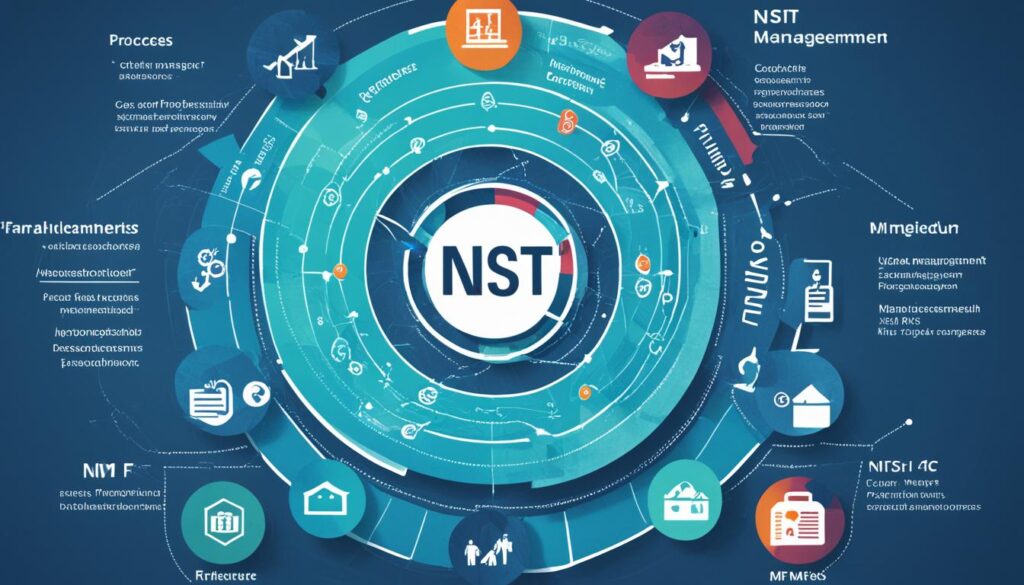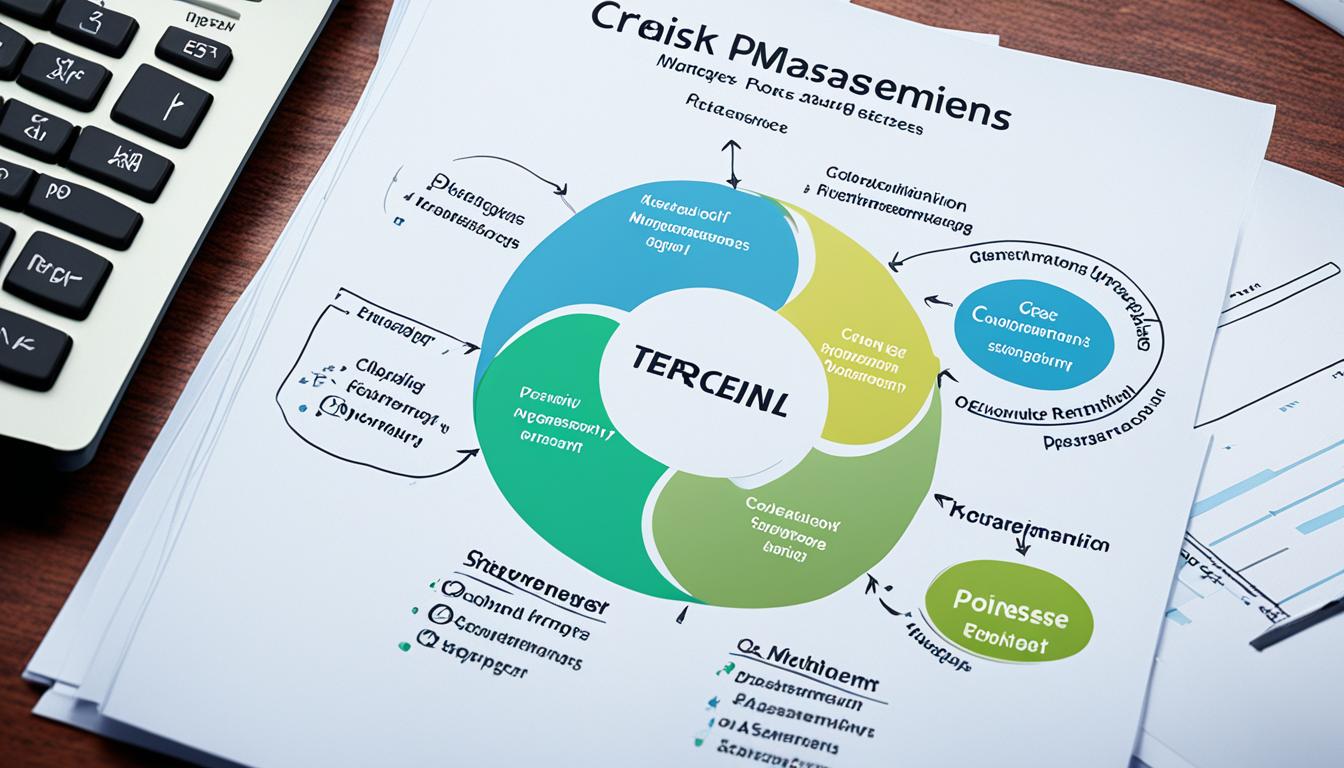When it comes to information security and risk management, organizations of all sizes need effective strategies to protect their assets and mitigate potential threats. For medium-sized enterprises, in particular, understanding and implementing a comprehensive risk management framework is crucial for maintaining a secure environment. This is where the SP800-37 guide by the National Institute of Standards and Technology (NIST) comes in. In this article, we will explore how the SP800-37 guide can aid medium businesses in risk assessment, implementing security controls, threat identification, vulnerability analysis, risk mitigation, risk response, risk monitoring, and risk reporting.
At [Your Company], we have extensive experience working with medium-sized enterprises to implement effective risk management practices. Through our expertise and knowledge of the SP800-37 guide, we help businesses identify and assess risks, implement appropriate security controls, and monitor the effectiveness of these controls. With a focus on information security and risk management, we understand the unique challenges faced by medium businesses and provide actionable insights to enhance their security posture.
- SP800-37 is a comprehensive risk management framework developed by NIST specifically for medium businesses.
- The guide assists organizations in assessing risks and implementing security controls.
- It provides a systematic approach to threat identification, vulnerability analysis, risk mitigation, risk response, risk monitoring, and risk reporting.
- By following the SP800-37 guide, medium businesses can enhance their overall security posture and protect their valuable assets against evolving threats.
What is the NIST Risk Management Framework (RMF)?
The NIST Risk Management Framework (RMF) is a comprehensive and flexible approach developed by the National Institute of Standards and Technology (NIST) to managing risk in organizations. It integrates cybersecurity, privacy, and supply chain risk management into the development lifecycle of information systems and technology platforms.
The RMF consists of seven steps:
- Prepare: In this step, organizations identify key roles, establish a risk management strategy, and conduct a risk assessment.
- Categorize: Systems are categorized based on the level of protection required.
- Select: Security controls are chosen and customized.
- Implement: The selected controls are implemented within the organization.
- Assess: The effectiveness of the implemented controls is assessed through testing and evaluation.
- Authorize: Based on the assessment, the system is authorized for operation, and the risk management decisions are formally documented.
- Monitor: Ongoing monitoring ensures the security and privacy controls remain effective.
By following this risk-based approach, the NIST RMF helps organizations identify and manage risks, apply appropriate security controls, and ensure ongoing monitoring and reporting. It is a valuable tool for organizations in protecting their information assets and mitigating potential threats.
The Seven Steps of the NIST Risk Management Framework (RMF)
The NIST Risk Management Framework (RMF) provides a structured approach for organizations to manage risk and ensure the security and privacy of their information systems. It consists of seven essential steps that organizations must follow:
- Prepare: This initial step involves identifying key roles and responsibilities, establishing a risk management strategy, and conducting a risk assessment to understand the potential risks associated with the organization’s information systems.
- Categorize: In this step, organizations categorize their information systems based on factors such as the system’s impact on the organization, its data, and its criticality.
- Select: The select step involves choosing and customizing security controls that are appropriate for the categorized information systems. Organizations must consider factors such as regulatory requirements and the system’s environment when selecting controls.
- Implement: In this step, organizations implement the selected security controls. This may involve configuring software, establishing policies and procedures, and training personnel.
- Assess: The assess step involves evaluating the effectiveness of the implemented security controls through various assessment techniques such as vulnerability assessments, penetration testing, and security control assessments.
- Authorize: Organizations must obtain authorization to operate their information systems. This involves reviewing the results of the security control assessments, assessing residual risks, and making an informed decision regarding system authorization.
- Monitor: The final step is to continuously monitor the implemented security controls and the organization’s information systems to ensure ongoing effectiveness. This includes conducting periodic security control assessments, monitoring system performance, and addressing any identified weaknesses or vulnerabilities.
By following these seven steps, organizations can establish a comprehensive risk management framework that effectively identifies, mitigates, and monitors risks to ensure the security and privacy of their information systems.
Summary of the Seven Steps of the NIST Risk Management Framework
| Step | Description |
|---|---|
| Prepare | Identify roles, establish risk management strategy, and conduct risk assessment |
| Categorize | Categorize information systems based on impact, data, and criticality |
| Select | Select and customize security controls based on categorized systems |
| Implement | Implement selected security controls |
| Assess | Evaluate the effectiveness of implemented security controls |
| Authorize | Obtain authorization to operate information systems |
| Monitor | Continuously monitor implemented security controls and information systems |
Benefits of Applying the NIST Risk Management Framework
Applying the NIST Risk Management Framework (RMF) offers several benefits to organizations. By following this comprehensive framework, organizations can prioritize risks, protect assets, and effectively manage their reputation. Let’s explore these benefits in more detail:
Prioritize Risks
Implementing the NIST RMF allows organizations to identify and assess risks systematically. By conducting thorough risk assessments and vulnerability analyses, organizations can prioritize risks based on their potential impact and likelihood of occurrence. This prioritization helps direct resources and efforts towards mitigating high-risk areas, ensuring that limited resources are utilized effectively.
Protect Assets
One of the key objectives of the NIST RMF is to protect valuable assets, including both physical and digital assets. Through the implementation of appropriate security controls and risk mitigation strategies, organizations can safeguard their critical infrastructure, sensitive data, and intellectual property. This protection helps prevent unauthorized access, data breaches, and theft, preserving the confidentiality, integrity, and availability of important assets.
Manage Reputation
Reputation management is vital for maintaining trust and credibility in today’s interconnected world. The NIST RMF assists organizations in identifying potential cyber threats and data breaches. By proactively implementing security controls and risk mitigation measures, organizations can manage risks that could potentially damage their reputation. Safeguarding customer data, maintaining privacy, and demonstrating a commitment to security can help organizations build a strong reputation and enhance stakeholder trust.
IP Protection
Intellectual property (IP) is a valuable asset for many organizations, providing a competitive edge and driving innovation. The NIST RMF helps ensure the protection of IP by implementing robust security controls that safeguard proprietary information and trade secrets. By effectively managing risks and preventing unauthorized access or disclosure, organizations can safeguard their intellectual property from theft or misuse, maintaining their competitive advantage in the market.
By following the NIST Risk Management Framework, organizations can establish a robust risk management program that enhances information security and privacy, safeguards their reputation, protects valuable assets, and preserves their competitive advantage. Implementing the framework is a proactive step towards fortifying their defenses against evolving cyber threats and ensuring the overall resilience of their operations.
How to Get Started With the NIST Risk Management Framework (RMF)

Implementing the NIST Risk Management Framework (RMF) involves a systematic approach consisting of seven steps. By following these steps, organizations can effectively manage risks, enhance information security, and protect their valuable assets.
Step 1: Prepare
During the preparation phase, it is essential to identify key roles and responsibilities within the organization. This includes appointing individuals who will be responsible for overseeing risk management activities. Additionally, organizations should establish a risk management strategy that aligns with their objectives and conduct a thorough risk assessment to identify potential threats and vulnerabilities.
Step 2: Categorize
Categorizing systems is crucial in determining the appropriate level of protection required. This step involves evaluating the impact and potential risks associated with each system and classifying them into different risk categories. By categorizing systems, organizations can prioritize their efforts and allocate resources effectively.
Step 3: Select
After categorization, the next step is to select and customize the appropriate security controls. Organizations should review the provided security controls in the NIST RMF documentation and choose the ones that align with their risk management strategy and organizational needs. Customization ensures that the controls adequately address the identified risks.
Step 4: Implement
Implementing the selected security controls involves integrating them into the organization’s infrastructure and operational processes. This step requires collaboration across various teams to ensure a smooth implementation. Organizations should also document their implementation activities for future reference and compliance requirements.
Step 5: Assess
Once the security controls are implemented, the next step is to assess their effectiveness. This assessment involves evaluating and testing the controls to ensure they adequately address the identified risks. Organizations can perform vulnerability scans, penetration tests, and other assessments to identify any gaps or weaknesses in the implemented controls.
Step 6: Authorize
After assessing the security controls, organizations must obtain the necessary authorizations. This step involves reviewing the assessment results, documenting the findings, and seeking approvals from relevant stakeholders. Authorizations ensure that the implemented controls meet the required standards and are aligned with the organization’s risk management objectives.
Step 7: Monitor
The final step in the NIST RMF is continuous monitoring. This step involves ongoing monitoring and regular assessments of the security controls, systems, and processes. By consistently monitoring and reviewing the effectiveness of the implemented controls, organizations can identify new risks, address emerging threats, and make necessary adjustments to their risk management practices.
| Steps | Description |
|---|---|
| Prepare | Identify key roles, establish a risk management strategy, and conduct a risk assessment. |
| Categorize | Evaluate and classify systems into risk categories to determine necessary protection. |
| Select | Choose and customize the appropriate security controls that align with organizational needs. |
| Implement | Integrate and document the selected security controls into the organization’s infrastructure. |
| Assess | Evaluate and test the implemented controls to ensure their effectiveness. |
| Authorize | Review assessment results, document findings, and obtain necessary approvals. |
| Monitor | Ongoing monitoring and regular assessments of the implemented controls and processes. |
By following these seven steps, organizations can effectively implement the NIST Risk Management Framework (RMF) and improve their risk management practices. The RMF provides a structured and comprehensive approach to managing risks and enhancing information security, allowing organizations to protect their assets and ensure ongoing privacy and security. Remember that the implementation of the RMF might pose various challenges. Organizations can seek external assistance to overcome these challenges and ensure successful implementation.
Related Publications and Standards of the NIST Risk Management Framework
The NIST Risk Management Framework (RMF) is supported by various publications and standards developed by the National Institute of Standards and Technology (NIST). These resources provide valuable guidance and support for organizations looking to implement the RMF effectively and enhance their risk management practices.
NIST SP 800-53
NIST SP 800-53 is a publication that details specific security and privacy controls for federal information systems and organizations. It provides comprehensive guidelines and recommendations for selecting and implementing security controls to protect sensitive information.
NIST SP 800-37
NIST SP 800-37 is the main guide for applying the Risk Management Framework (RMF). It offers step-by-step instructions on how to establish risk management processes, categorize information systems, select appropriate security controls, and continuously monitor and assess the effectiveness of implemented controls.
NISTIR 8212
NISTIR 8212 is an assessment program for information security continuous monitoring. It provides organizations with guidance on how to establish and maintain effective continuous monitoring programs that help identify and respond to security events and vulnerabilities in a timely manner.
In addition to these publications, there are numerous other standards and resources available that can further assist organizations in implementing and aligning their risk management practices with the NIST RMF. By leveraging these publications and standards, organizations can enhance their understanding and implementation of the RMF, ensuring effective risk management and information security.
The Importance of Compliance with the NIST Risk Management Framework

Compliance with the NIST Risk Management Framework (RMF) is crucial for federal agencies, as it is mandated by the Federal Information Security Modernization Act (FISMA). Additionally, compliance with the RMF may also be required for intelligence and contractors for the Department of Defense (DoD).
The RMF provides a structured and disciplined approach to managing risk and ensuring the security and privacy of information systems. It helps federal agencies meet their compliance requirements and ensures a consistent and effective approach to managing risk across different organizations.
By adhering to the NIST RMF, federal agencies can:
- Align their risk management practices with industry standards and best practices
- Effectively identify, assess, and mitigate risks to their information systems
- Enhance the security and privacy of sensitive data
- Adopt a proactive stance towards cybersecurity threats
- Establish a standardized framework for risk monitoring and reporting
Compliance with the NIST RMF not only helps federal agencies fulfill their legal obligations but also reinforces their commitment to protecting critical information assets. It allows them to stay ahead of evolving cybersecurity threats and maintain the trust and confidence of stakeholders.
Implementing the RMF also enables federal agencies to demonstrate due diligence in safeguarding sensitive information, especially in a landscape where cyberattacks and data breaches pose significant risks. By following the RMF’s guidelines and implementing appropriate security controls, federal agencies can establish a robust risk management program and enhance their overall security posture.
Overall, compliance with the NIST Risk Management Framework is not only a legal requirement but also a strategic imperative for federal agencies. It provides a comprehensive and effective approach to managing risk, protecting sensitive information, and ensuring the continuity of critical operations.
Challenges of Implementing the NIST Risk Management Framework
Implementing the NIST Risk Management Framework (RMF) can bring forth various challenges for organizations. As a comprehensive framework, it requires dedicated resources and expertise to ensure successful implementation. The complexity of the framework may pose difficulties for organizations without prior experience or knowledge in risk management.
Understanding and applying the RMF’s controls and guidance can be daunting. The intricacies of risk assessment, security controls, and risk response may require organizations to seek external assistance. Fortunately, there are third-party vendors and experts available who specialize in implementing the RMF and navigating its complexities.
By partnering with these professionals, organizations can overcome implementation challenges related to complexity, resource requirements, and expertise. These experts bring valuable insights and guidance, enabling organizations to effectively apply the NIST RMF and enhance their risk management practices.
How Anchore Helps Organizations Meet the NIST Risk Management Framework
At Anchore, we understand the importance of compliance with the NIST Risk Management Framework (RMF) and the challenges organizations face in implementing it. That’s why we collaborate with federal service integrators to provide tailored solutions that help organizations meet the requirements of the RMF.
Our Anchore Enterprise platform is designed to simplify the implementation of the RMF and support continuous compliance. With automated software supply chain management, vulnerability scanning, and compliance monitoring capabilities, we enable organizations to streamline their compliance processes and ensure the security and integrity of their software supply chain.
By utilizing Anchore’s expertise and tools, organizations can:
- Simplify the implementation of the NIST Risk Management Framework
- Automate compliance processes
- Identify and mitigate vulnerabilities in their software supply chain
- Ensure continuous compliance with the RMF
Our collaboration with federal service integrators allows us to offer tailored solutions that align with the unique compliance needs of organizations operating within federal environments. We understand the complexities of compliance in these environments and provide the support necessary to navigate the requirements of the RMF.
With Anchore, organizations can confidently meet the compliance obligations of the NIST Risk Management Framework, ensuring the security and integrity of their information systems.
Anchore’s Solutions for RMF Compliance
| Key Benefits | Features |
|---|---|
| Automated software supply chain management | Enables organizations to track and monitor the security of their software supply chain, identify vulnerabilities, and ensure compliance with RMF requirements |
| Vulnerability scanning | Provides automated scanning of software components for vulnerabilities, allowing organizations to mitigate risks and ensure the integrity of their software stack |
| Compliance monitoring | Continuous monitoring of compliance status, ensuring organizations stay up to date with the latest RMF requirements |
Leveraging Anchore’s capabilities, organizations can effectively manage their compliance obligations under the NIST Risk Management Framework. Our solutions enable organizations to automate compliance processes, proactively identify vulnerabilities, and ensure the security of their software supply chain.
Conclusion
The implementation of the NIST Risk Management Framework (RMF) is essential for medium-sized businesses seeking to effectively manage risk and protect their information systems. By following the seven steps of the RMF, organizations can conduct thorough risk assessments, identify vulnerabilities and threats, and implement appropriate security controls.
The RMF also emphasizes the importance of continuous monitoring and reporting. By regularly evaluating the effectiveness of security controls and promptly addressing any identified risks, organizations can maintain a proactive approach to risk mitigation and response.
Furthermore, compliance with the RMF helps organizations protect their valuable assets, manage their reputation, and ensure the security and privacy of their information. By adhering to industry standards and best practices, organizations can demonstrate their commitment to information security, gain stakeholder trust, and remain resilient in the face of evolving threats.
To simplify the implementation of the RMF, organizations can leverage the expertise and tools offered by vendors such as Anchore. Their software supply chain management and compliance monitoring solutions provide valuable support in maintaining a strong risk management program while ensuring continuous compliance with the RMF.







